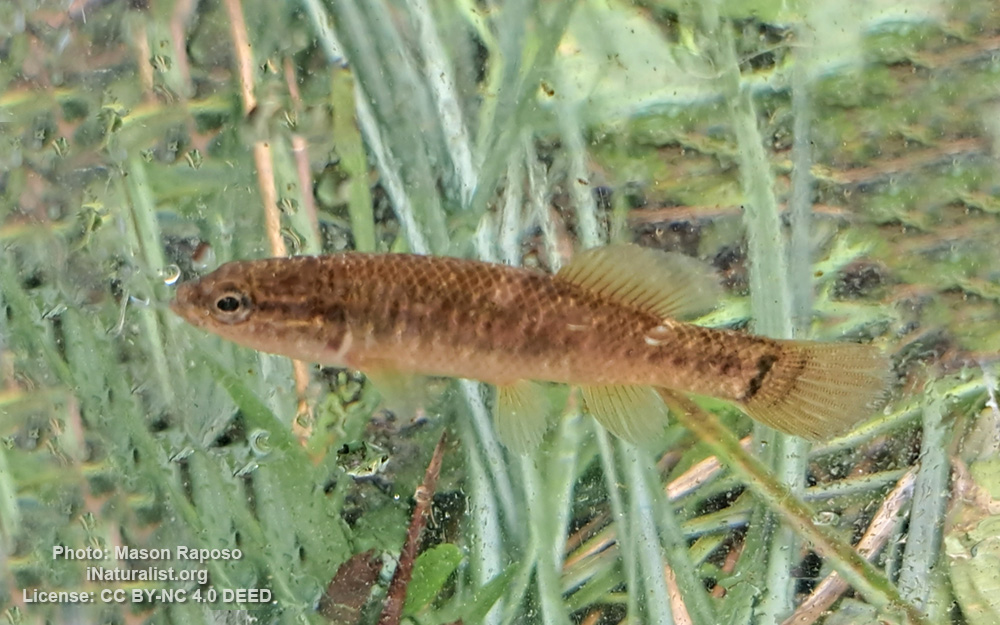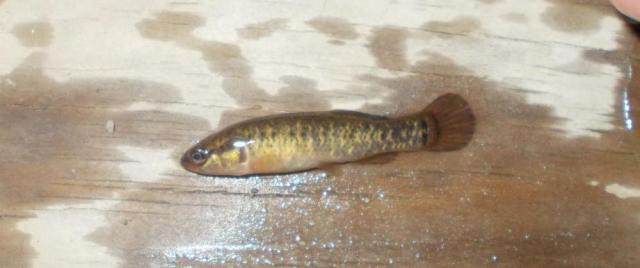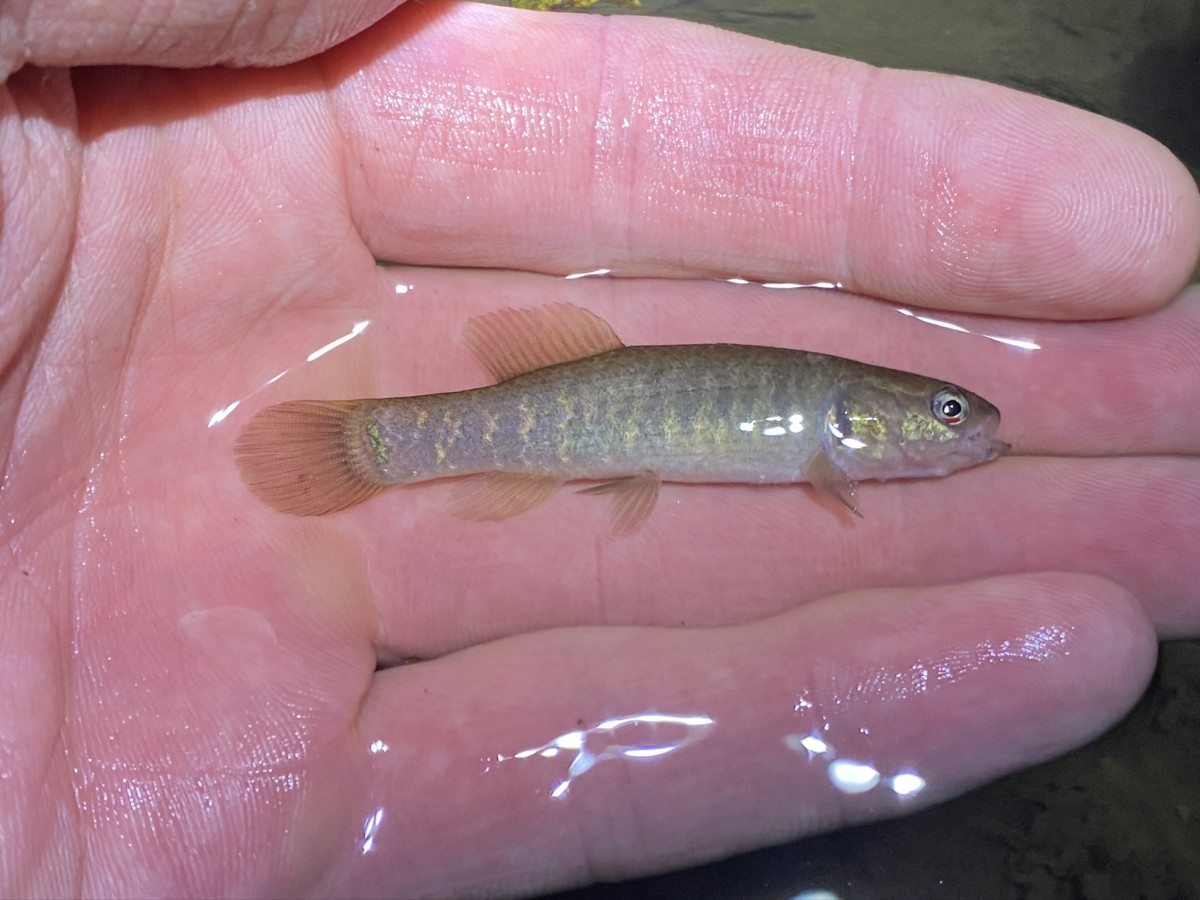Central mudminnow
(Umbra limi)

Classification
General data
The central mudminnow (Umbra limi) is a small fish in the family Umbridae of the order Esociformes. It is found in central and eastern North America in productive waters. It is fairly tolerant of low oxygen concentrations and, as a result, it is sometimes the only, or one of a very few, fish species present in waters susceptible to winter or summer kill.
Description
The central mudminnow lives in slow-moving water around ponds, lakes, and streams in central North America, and ranges in length from 51–102 mm. It burrows tail-first in mud and can tolerate low oxygen levels, allowing it to live in waterways unavailable to other fishes.
Its coloration matches this habitat, being brownish above with mottled sides and a pale belly. It is eaten by many species of fish such as grass pickerel, sunfishes, northern pike, and catfishes; it is also preyed upon by birds, foxes, and snakes when caught out of water.
Distribution
Umbra limi is a widely distributed species that inhabits many freshwater systems such as lakes, streams, and wetlands near the littoral zone, or near the shore, and around dense cover in central North America west of the Appalachian Mountains, including the St. Lawrence River, Great Lakes, Hudson Bay (Red River, and the Mississippi River basins from Quebec to Manitoba and south to central Ohio, western Tennessee, and northeastern Arkansas. The central mudminnow has also been introduced into many of the tributaries in Connecticut and Massachusetts. Their habitats being marshy lands and rivers are under attack by human development and contact constantly and is likely causing a decline in their populations.














